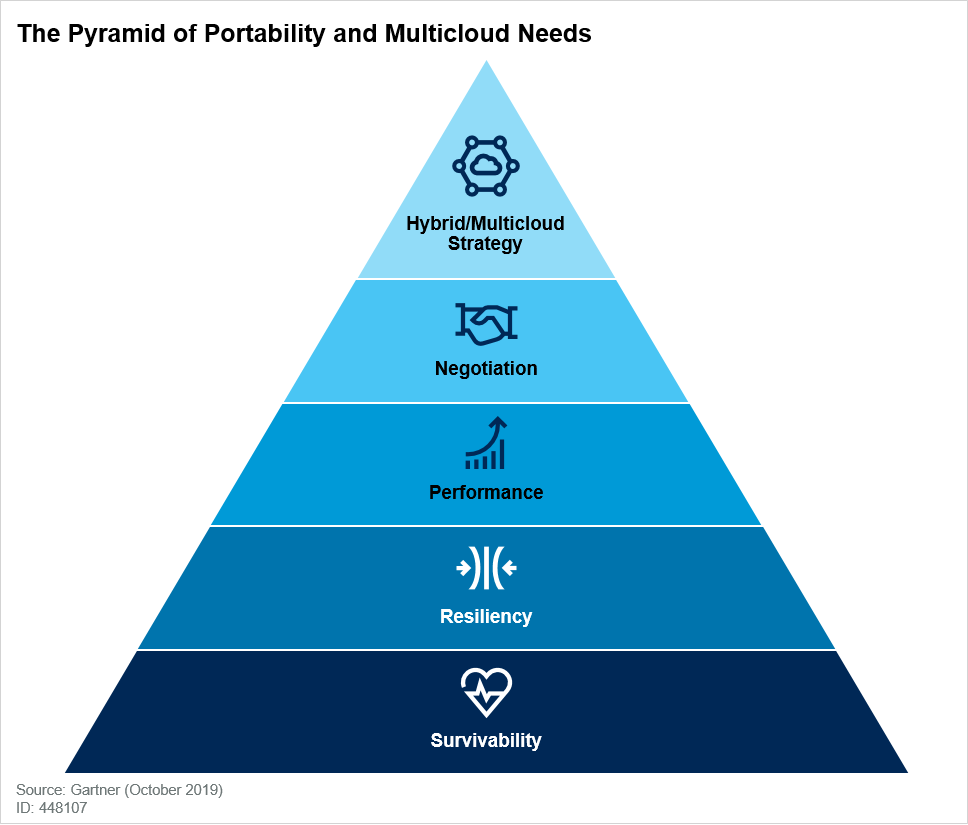This post originally appeared on the Gartner Blog Network.
I often discuss with clients in infrastructure and operations on whether their organizations should adopt Kubernetes to make their applications portable. If you also have this question, the answer is: no.
Actually, the full story: adopt Kubernetes for the many benefits it provides to application development and architecture and get portability as a side effect. But do not make portability your primary driver for adopting the technology. This thesis is well expanded in the document that Richard Watson, Alan Waite and I have crafted during lockdown this spring: “Assessing Kubernetes for Hybrid and Multicloud Application Portability” (paywall).
Kubernetes or not, application portability always comes at a price that you must be willing to pay – the “portability tax”. Gartner’s advice is to make this decision application by application, based on the likelihood that it will be moved in the future, and how fast that needs to happen. In fact, non-portable applications may still be moved, it will just require more time to execute the transformation.
What is the likelihood that applications change infrastructure provider through their lifespan?
Inquiries show that this likelihood is actually very low. Once deployed in a provider, applications tend to stay there. This is due to data lakes being hard – and expensive – to port and, therefore, end up acting as centers of gravity. The figure below shows the Gartner pyramid of portability, which illustrates basic motivations (at the bottom) and more strategic ones (at the top) for designing portable applications.

For each of your application, ask yourself why portability is important to you. Is it to guarantee survivability? To increase your negotiation leverage with the cloud provider? To mitigate vendor lock-in? The higher you are in the pyramid, the least likely it is that you’ll have those needs.
Kubernetes facilitates portability because it helps standardize our software development life cycle and, most importantly, our operating model. However, it also adds management overhead to our organization, it forces us to engage with commercial vendors and to completely rearchitect our applications. Implementing portability with Kubernetes also requires avoiding any dependency that ties the application to the infrastructure provider, such as the use of cloud provider’s native services. Often, these services provide the capabilities that drove us to the cloud in the first place.
In conclusion, the portability tax is high. Make sure to pay it only for applications that truly need it and that are likely to switch infrastructure provider at some point. For all the others, don’t choose Kubernetes on the basis of a universal portability principle, just because it “sounds right”. On the contrary, adopt Kubernetes for agility, scalability and for modernizing your application architectures.
More on this topic in “Assessing Kubernetes for Hybrid and Multicloud Application Portability” (paywall). Should you want to discuss more, feel free to schedule an inquiry call with myself or Alan Waite by emailing inquiry@gartner.com or through your Gartner representative.
Follow me on Twitter (@meinardi) or connect with me on LinkedIn for further updates on my research. Looking forward to talking to you!


